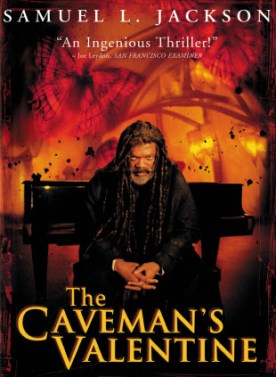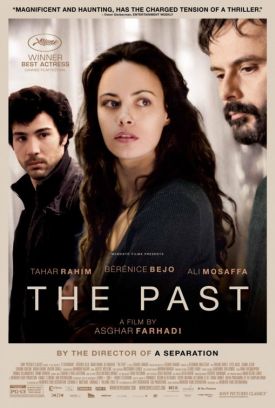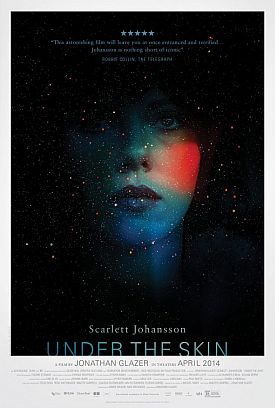Great Expectations
Hollywood producers have always been a prey to the delusion that what makes
great novels great are their stories, or their characters or their
“ideas”—things whose transfer to celluloid is fairly straightforward. But as
Stéphane Mallarmé once said of poems, novels are not made of ideas
but of words. Without Dickens’s words, Great Expectations is just
superior Victorian melodrama and not necessarily promising material for the
movies—though David Lean, John Mills and Alec Guinness managed to make a pretty
good job of it half a century ago. But perhaps it is not even possible anymore.
Pip’s encounter with the convict on the East Anglian marshes has an elemental
quality to it that it is scarcely possible to reproduce today. When Alfonso
Cuarón, working from a screenplay by Mitch Glazer, tries to reproduce it
in his new cinematic version of the novel, we keep asking ourselves why the
little boy (here, for some obscure reason, renamed Finn) didn’t just go to the
police? Kids nowadays, for better and worse, are much more connected to the
world and unlikely to let a scary man met in a wilderness fill their whole
mental horizon unless they are disturbed or retarded.
Well, OK. The adaptors couldn’t help that. And Robert DeNiro’s fine
performance as the convict shows that they really tried to make his scariness
override all that TV-borne youthful sophistication. What they could help was the
casting of Ethan Hawke as the grown-up Finn. This is an actor with only one
facial expression in his repertory: a sort of dumb amazement, expressed with the
mouth open, which makes him look to me like a village idiot. And yet for some
reason he is often cast in the part of a brooding intellectual. Here he is an
artist. And that’s another problem. Dickens’s Pip went to London to learn how to
be a gentleman. All through Dickens’s novel there is the very strong sense that
gentlemanliness is a noble aspiration. Mr Glazer’s Finn aspires to be a boor by
the now forgotten standards of the gentleman—a New York art celebrity whose
lack of manners is supposed to be a token of his authenticity of feeling. Pip’s
contemporary avatar doesn’t want to be a gentleman; he wants to be rich and
famous. It’s not the same.
So even if this adaptation of the novel could survive the loss of Dickens’s
language and its unprepossessing leading man, the extraction of its moral
dimension would be fatal. In fact, you don’t see any education taking
place—not even the education in boorishness that young New York artists must
undergo. One minute Finn is arriving in New York, a rube from Florida with
nothing, and the next he’s opening his own incredibly successful show at a posh
gallery in the city, and being rude to all the rich art people who know him by
his first name. How did he get from there to here? We never find out. All we see
of him working is his sketching his femme fatale, Estella (Gwyneth
Paltrow), in the nude.
As in Titanic, that is, a romantic artist sketches his gal nude as a
preliminary to or a substitute for sexual congress. In this case, it suggests
that sex is for him a pose, like art. The artistic pose is obvious, given that
Finn simply gives up his art for eight years after Estella leaves their little
Florida Gulf Coast town for Europe. He goes to work on the fishing boat of his
stepfather, Joe (Chris Cooper) and is quite happy there. Artistic expression
comes back to him only as a means to a social and pecuniary end. Thus for Finn,
looking broodingly and drawing childish dawbs that are supposed to be works of
genius becomes the equivalent of learning the gentlemanly arts in Dickens.
By the way, the pictures we see, which purport to come from the pencil of
Finn, are actually the work of Francesco Clemente, and they make an odd sort of
comment on the action of their own. For the various representations of the body
of the beautiful and charming Miss Paltrow are rendered with considerable
sensual realism while the heads all seem to have that angular, bovine quality
that makes Picasso’s women so scary. The awkward join of human and animal may
also serve as an ironic comment on the gentlemanly ideal.
Anne Bancroft’s Ms Dinsmoor, the film’s version of Miss Havisham, is
prevented, by political considerations, from being devastated (as was her
original) by the loss of a man. Instead she is a lively old bird whose training
up of Estella to be a heartbreaker only seems one in a long list of her
eccentricities. Interestingly, however, she is the only person in the film who
seems to have a moral lesson to learn. The last we see of her is as she calls
out after Finn: “What have I done?” Unfortunately, we cannot be quite sure
ourselves what she is referring to. Possibly it’s that she’s sorry now she
taught Estella to be such a bitch. But it’s odd, in that case, that Estella
herself never seems to be particularly sorry about it.
Nor, for that matter, is Finn ever sorry—so far as we can see—for his being
embarrassed by Joe or disgusted by the reappeared convict, here called Lustig.
He learns no moral lessons, is never humiliated except by Estella (her fault)
and never has to recognize or amend a fault. In other words, this film has
nothing left of Dickens but the title and a vaguely familiar story. It is of
course unfair for us to judge it simply on the grounds of its having drained
away the novel’s Victorian earnestness, but it has replaced same with nothing
but empty gesture and banal language. When Magwich/Lustig turns up at Finn’s
expensive apartment in the middle of the night and teases him with the
information that he is the mysterious benefactor, Finn, who thinks he’s just let
someone in to use the phone, begins to get nervous. “This is making me feel real
uncomfortable,” he says, obviously hoping that a hint of the therapeutically
“inappropriate” will drive the old man away.
The whole movie made me feel real uncomfortable.
Discover more from James Bowman
Subscribe to get the latest posts to your email.







